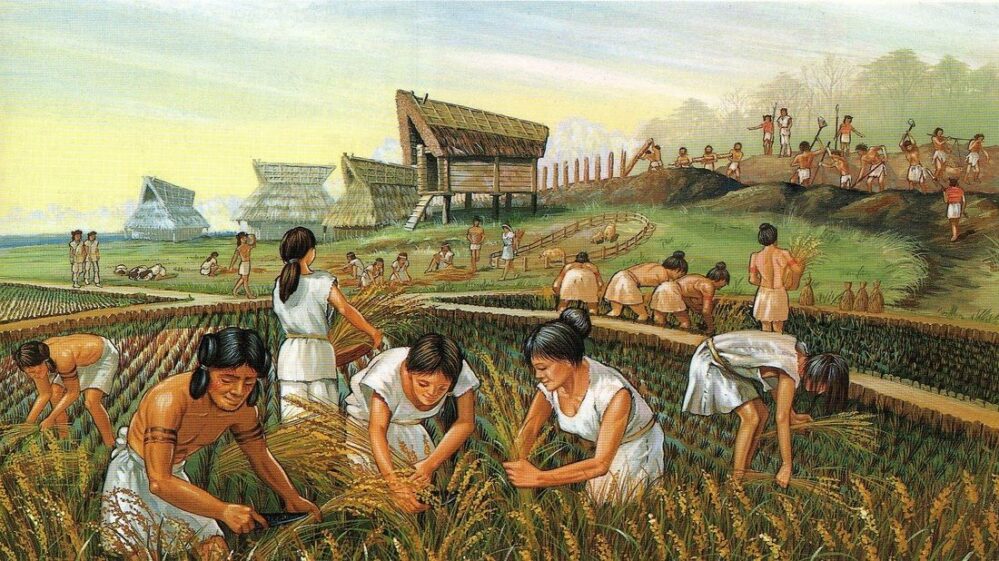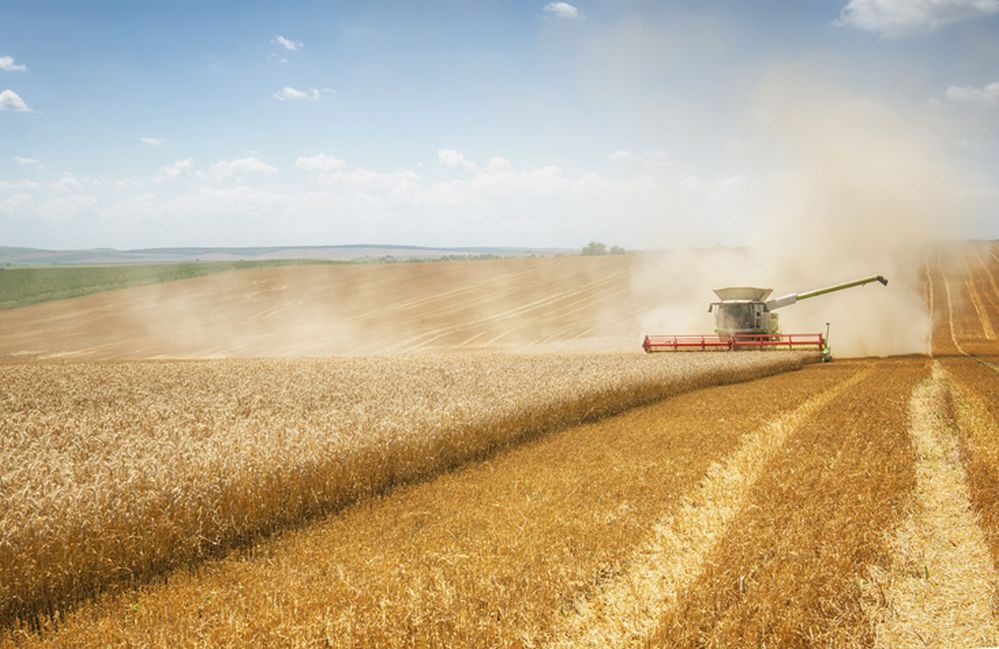Rebecca Aguiar is an associate and Ana Luiza Soffiatti is an analyst at SP Ventures, an early-stage fund investing in agrifoodtech across Latin America.
The views expressed in this guest commentary are the author’s own and do not necessarily reflect those of AgFunderNews.
Throughout human history, our fascination with building machines that can emulate our intelligence has driven remarkable progress. As philosopher Henri Bergson once noted, these machines are not mere mechanical beings; they possess an organic quality, capable of evolving much like living organisms.
In the realm of agriculture, this evolution has been particularly transformative. This article embarks on a journey through the agricultural eras of technological development, from the relentless manual labor of yesteryears to the cutting-edge artificial intelligence (AI)-driven practices of today. Join us as we explore how
these technological advancements have shaped the past, present, and future of farming, optimizing processes, enhancing efficiency, and securing a more sustainable food future for humanity.
Farming prior to the second agricultural revolution
In the eras preceding the second agricultural revolution, farming was a Herculean challenge that demanded strength, resilience, and a significant dose of hope. Farmers faced the relentless majesty of the sun, submitting to unending physical exertion that encompassed numerous manual tasks. Each action, as listed below, called for tireless dedication:
- Manual planting: Farmers walked through fields, placing seeds into the earth using their hands or simple tools.
- Manual harvesting: Farmers employed sickles, machetes, and other manual implements to gather ripe produce.
- Manual irrigation: Farmers hauled water buckets or constructed channels to direct river water to the fields.
In the illustration below, we have a depiction of how harvesting was done during the Neolithic period.

Each callus on the hand told the story of spilled sweat, honorable effort, and weather-resistant determination. The limited access to information and data wove a web of uncertainties around the farmers, who mostly relied on their personal observations and the wisdom passed down by the elders of the farming community.
The absence of real-time insights and weather forecasts left plans at the mercy of unpredictable nature. Storms, excessive heat, or sudden outbreaks of diseases could annihilate months of hard work, throwing the farmers into a game of uncertain chance.
In response to these challenges and with the aim of alleviating the burden on the workers, various technological advancements and innovations emerged in the 19 th , 20th and 21 st centuries to assist farmers and enhance agricultural practices.
Farming in the 20th and 21st centuries: the evolution of technology
From the second agricultural revolution in the mid-20th century to the contemporary embrace of artificial intelligence (AI), the agricultural narrative unfolds as a remarkable testament to human perseverance and adaptability. In an era marked by burgeoning global populations, visionary farmers embarked on a journey of innovation to satiate the ever-growing demand for sustenance.
This journey yielded a host of innovative technologies, some of which include:
- High-yield varieties: Crop varieties such as wheat and rice were developed to produce higher yields. These genetically improved seeds were capable of
resisting pests and diseases. - Chemical fertilizers: The introduction of chemical fertilizers allowed for the replenishment of nutrients in the soil, thereby increasing crop productivity.
- Pesticides: The application of chemical pesticides helped control pests and diseases, protecting crops and increasing yields.
- Motorized agricultural machinery: Agricultural mechanization was driven by the introduction of tractors and other motorized farming equipment, enhancing the efficiency of agricultural operations.
- Advanced irrigation methods: New irrigation techniques enabled more efficient water use, making it possible to cultivate previously unproductive areas.
- Intensive practices: The green revolution promoted intensive management practices, such as the intensive use of agricultural inputs and high-density planting.

Farming in the future: precision, efficiency, and sustainability
Despite the development of these technologies since the second agricultural revolution, which has increased productivity, we are faced with impending challenges. In an era where challenges loom large on the horizon, where the global population is poised to soar to 9.7 billion by 2050, and where climate-induced disasters are an ever-present threat, the call to action resounds clearly: we must produce over 60% more food by 2050, according to FAO, while battling climate change head-
on. It is in these trials that the crucible of progress is forged, and the imperative to invest in cutting-edge technologies becomes paramount.
Within this dynamic landscape, agfoodtech companies have emerged as guiding lights, addressing critical issues like food waste, traceability, and access to credit, among others.

AI and precision ag, disease and pest forecasting
Artificial intelligence plays a pivotal role, propelling agriculture into a new era of precision, efficiency, and sustainability. The transformative impact of AI is undeniable, with the AI in agriculture market poised for meteoric growth, driven by a compound annual growth rate of 23.1% from 2023 to 2028, according to a new report by MarketsandMarkets.
AI in agriculture offers several advantages to the farmers. Precision agriculture, for example, benefits from the detailed collection and analysis of data on soil, climate, and plant health, enabling precise application of agricultural inputs and reducing waste. Furthermore, AI also plays a vital role in disease and pest forecasting, detecting and predicting threats to crops through data analysis, providing targeted and rapid responses to minimize losses.
AI and resource use optimization, process automation
On the other hand, resource use optimization is powered by AI, which can maximize efficiency in the use of elements such as water, fertilizers, and pesticides, reducing both costs and environmental impacts. And process automation comes to life through robots and drones equipped with AI, capable of autonomously = performing agricultural tasks like planting, spraying, and harvesting, reducing the reliance on manual labor and boosting the efficiency of agricultural operations.
Furthermore, through the analysis of historical and real-time data, forecasts guide farmers in making informed decisions about aspects such as crop yields, market demand, and price fluctuations. Optimization of results becomes the driving force. Customized solutions for farmers and optimized supply chain management significantly contribute to predictive analysis.
These solutions offer tailored recommendations and insights, fine-tuned according to specific farm conditions, crop types, and regional factors. The result is enhanced logistical planning, superior quality control, and timely delivery. These measures reduce food waste, ensuring that fresher products reach consumers while also improving food traceability.
AI and agricultural finance
While plowing, planting, and harvesting might be perceived by some as the sum of agricultural activities, the role of financing, intrinsic to production, often takes a back seat due to its less obvious connection with AI. However, the integration of AI with agricultural finance heralds innovative prospects. This fusion accelerates insurance policy calculations, enabling risk assessment and the development of tailored financial products.
Precision insurance for farmers gains prominence, simplifying processes and reducing bureaucratic hurdles. Remarkably, risks are diminished through this integration.
Thus, the evolution of agriculture, from the arduous days preceding the second agricultural revolution to the embrace of artificial intelligence, signifies an unwavering commitment to progress, efficiency, and sustainability. Through these technological transformations, agriculture persists in its quest to adapt, enhance, and secure a more resilient and nourishing future for humanity.
Keeping an eye on the future of AI in agriculture
As mentioned above, the use of AI in the agriculture market is projected to grow at a compound annual growth rate of 23.1% from 2023 to 2028. And everyone is greatly emphasizing the short-term impact of AI and underestimating the long-term impact. We still can’t fathom the multitude of applicability and impact that AI will have in agriculture, but we need to be attentive to the daily changes.
Therefore, SP Ventures, a player in the venture capital landscape, is continually on the lookout for emerging companies and technologies. Within the realm of AI, the company has invested in companies including Traive and ZoomAgri.
Traive, specializing in agfintech, connects farmers to the capital market, optimizing credit flows through AI and automation. ZoomAgri, meanwhile, employs computer vision and machine learning to differentiate grain crops, reshaping supply chain analysis and boosting productivity.
Other companies outside of SP Ventures’ portfolio, but embracing AI, include ClimateAI and Farmers Business Network (FBN): ClimateAI, established in 2017, has developed a climate resilience platform using AI to mitigate the effects of climate change.
FBN’s ClimateLens platform combines advanced AI, machine learning, and diverse data to provide practical insights. This assists companies and governments in adjusting operations, identifying opportunities, and addressing climate demands. Recently, FBN launched the Norm AI advisor, an AI-based online chatbot that provides farmers with near real-time insights on agricultural information, soil health, optimal planting, and other relevant aspects.
As we explore these companies and their innovative contributions, it becomes evident that they represent just a small sample of the vast landscape of emerging technologies in the agricultural sector.
These initiatives offer valuable insights into challenges faced and areas for improvement in the food production chain. The quest for greater productivity in the field is on the brink of new horizons. Looking to the future, a profusion of creative solutions is expected, some addressing previously overlooked issues, while others elevate existing technologies to unprecedented levels of efficiency and impact.
These technologies, beyond enhancing efficiency, enable these producers, who once toiled tirelessly, to now enjoy life while continuing to nourish the world.
Further reading:
Bytes to Bites part one: Digitizing consumption insights. Leveraging AI in food product development
Why Farmers Business Network launched Norm, an AI advisor for farmers built on ChatGPT



